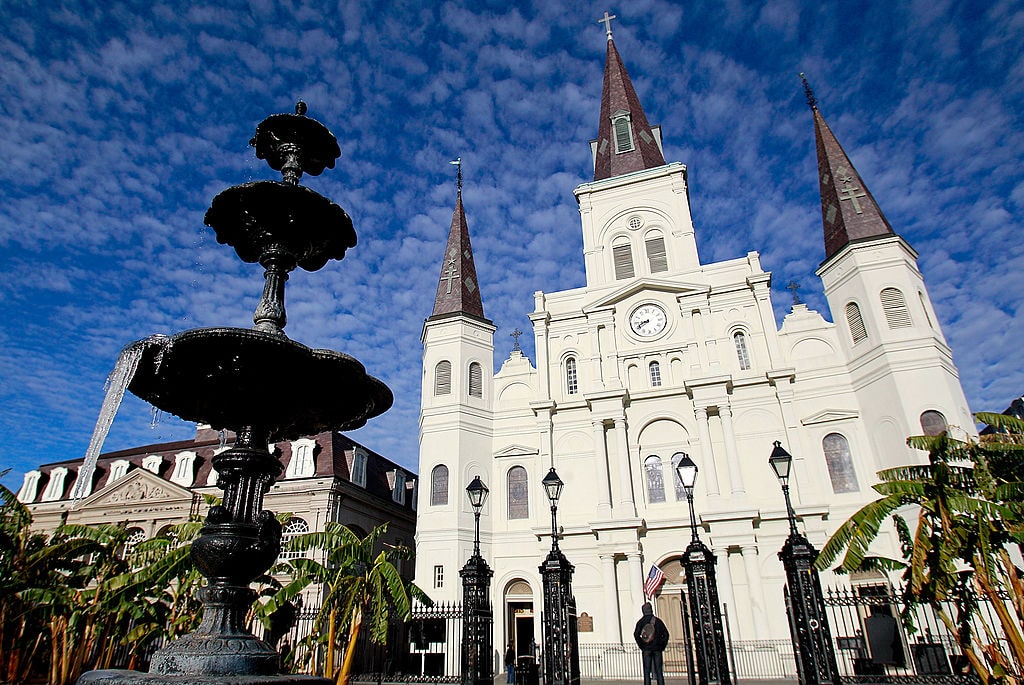All who wished for cooler temps: They’re coming — and then some. Tuesday we can kiss the New Orleans heat goodbye, at least for a little while. Temperatures are forecast to drop overnight, and coupled with the windchill, the temperature will be at a brisk 35 degrees according to city officials. Here’s what to know about and what to prepare for during the freezing weather in New Orleans:
Staying Warm – The Basics
In some of the houses in the city, they simply weren’t designed to hold the heat in. And that can make it colder. Here are the basics of what to do and not to do when it gets freezing.
- Space heaters: They come in handy when it gets this cold every now and than. You should keep them three feet away from anything that could catch fire. t DO NOT leave them unattended or go to sleep with them on.
- Stoves and ovens: NEVER heat your home with a stove or an oven, the New Orleans Fire Department and city officials say. It may sound like a good idea, but it’s not. It can lead to carbon monoxide poisoning. Plus, an oven is not designed to heat your home.
- Check smoke & carbon monoxide detectors: Make sure they are working.
- Keep a fire extinguisher: This is just a good idea in general. But in the freezing temperatures, something can go awry and it’s a best practice to have this.
- Pets: Bring them inside. For obvious reasons, don’t leave your cat or dog out in the cold. They’ll be cold just like you. Plus, the snuggle power is a good heat generator, right?
- Outdoor pets: Protect them with a dry, draft-free shelter that’s large enough to allow them to move comfortably, but small enough to hold in body heat. The floor of it should be raised a few inches from the ground and covered with cedar shavings or straw. The doorway should be covered with waterproof burlap or heavy plastic. It’s also important to note that pets that spend a lot of time outdoors need more food in the winter because keeping warm depletes energy. Routinely check your pet’s water dish to make certain the water is fresh and unfrozen. Use plastic food and water bowls because your pet’s tongue can stick and freeze to metal.
- Check on neighbors: Not everyone can take care of themselves. Check on your elderly neighbors or anyone else in your hood that may need some help. We look out for each other here.
City Activates Citywide Freeze Plan: What That Means
The Freeze Plan is activated to provide temporary shelter for homeless citizens. If you know someone in this situation, let them know that they can get out of the cold when it’s going to get below freezing.
Here are the shelter locations:
- Low Barrier Shelter: 1530 Gravier St., will accept adults beginning at 8 p.m. Tuesday
- The Salvation Army: 4530 S. Claiborne Ave., will accept adults beginning at 4 p.m. Tuesday
- Ozanam Inn: 843 Camp St., will accept men beginning at 4 p.m. Tuesday for overnight shelter. The courtyard with heaters is open 24/7 to anyone.
- Covenant House: 611 N. Rampart St., will accept individuals age 22 and under, their dependent children, and any women with dependent minor children. Open 24/7.
- New Orleans Mission: 1130 Oretha Castle Haley Blvd., will accept adults beginning at 4 p.m. Tuesday.
- Community Resource and Referral Center: 1530 Gravier St., will accept adults from 7:30 a.m. to 3:30 p.m. Tuesday.
- The Rebuild Center: 1803 Gravier St., will accept adults from 8 a.m. to 2:30 p.m. Tuesday.
You can also call (504) 821-2222 to report someone in need of shelter.
Sewerage and Water Board: Protect Pipes Ahead of Cold Temperatures
Protect Pipes
Insulate your exposed pipes.
- Wrap them with foam rubber or fiberglass sleeves. (You can also use rags or newspaper) Just be sure to wrap the pipes with at least an inch of those materials, then cover them with plastic wrap or aluminum foil to keep them dry.
Run Your Water (just a little bit)
When it’s cold outside, remember, just a little water goes a long way. Here’s what to do (and not do) when the outdoor temperature approaches 32 degrees:
- Turn on the indoor faucet farthest away from your water meter.
- Run only one faucet with no more than a trickle or water, about as thin as a standard strand of spaghetti, to minimize the chance of water freezing in your pipes.
- DO NOT run more than one faucet
- DO NOT run any faucet at full blast. It’s unnecessary, expensive and a waste. It can also contribute to lower water pressures across the city, risking the potential for a precautionary boil water advisory — and we all know how fun those are.
When the temperatures rise above freezing, turn off your taps. Running them at temperatures above 32 degrees doesn’t do anything other than rack up a bill and waste water.
What else you can do that helps:
- Open the doors to cabinets where your pipes are located to allow heat from the rest of the building to warm them.
- Open interior doors to allow heat to pass from room to room.
- Disconnect garden hoses.
What To Do If A Pipe Breaks
- First, call a licensed plumber immediately.
- Turn off and drain the water in your house. To do this, locate the main water line from your water meter. There should be a valve where that line enters your house. Turn it off. Then run all your indoor faucets to drain water from your pipes.
- Disconnect garden hoses and hoses to your washing machine.
Entergy: Tips to Manage Cold-Weather
When it gets cold, we’ve heard stories of doing anything and everything to keep warm. Heating can account for as much as 55% of your monthly bill, according to Entergy. Here are ways to make sure you don’t get shocked by your bill.
- Set the thermostat to 68 degrees. Every degree above 68 on the thermostat can increase your bill by about 3%, Entergy says. So, if you crank it up to a toasty 78 degrees, you’ve already added 30%.
- Seal air leaks. Install weather stripping around your doors, windows and any location where there may be a path between the inside and outside of your home or business.
- Conserve hot water. Wrap your electric water heater with a water heater blanket. Those can be found at local home improvement stores. Set the thermostat on it to 120 degrees or medium.
- Keep all doors and windows closed. This one seems simple, but it’s truth. Constant traffic will let out the warm air, forcing your heater to work harder to keep the room at the set temperature.
- Ensure fans are turning the right way. Fans should be run at a low speed clockwise during the winter. This helps keep the cold air from blowing down on you.
- Keep the air circulating. Don’t block heat registers or air returns with curtains or furniture.
- Leverage the sun. During the day, open your curtains and blinds to let in the warm sunlight. Close them at night to reduce heat loss.







